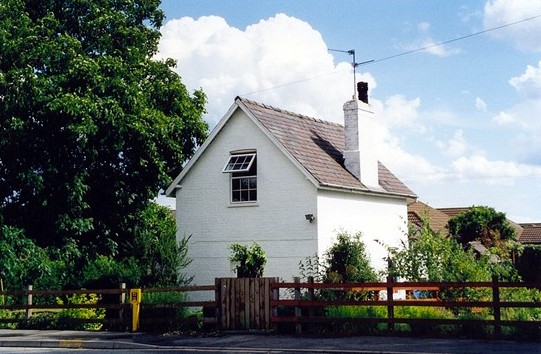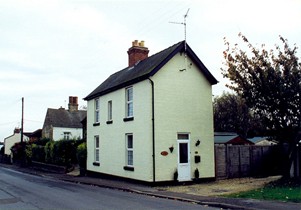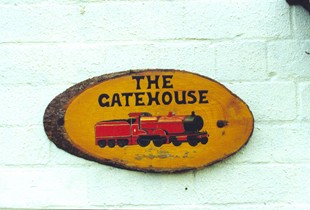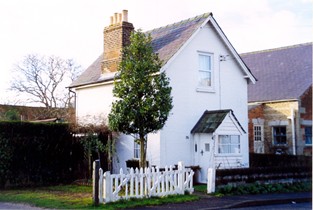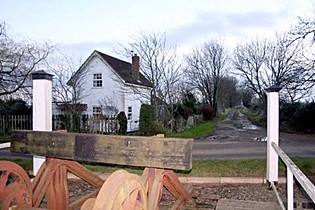|
Railway gatehouses
When Mill Drove was merely a stretch of countryside, the railway line between Bourne and Sleaford ran this way with level crossings over fen roads. The new line, which opened in 1872, gave villagers and townspeople access to North Lincolnshire and these gates were manned throughout the day. The railway company built cottages nearby for the gatekeepers in order that they could be on hand to maintain a continuous duty but still be with their families and tradition was that wives and sometimes children often opened and closed the gates when trains were imminent. Most of these distinctive buildings remain to this day, dotted around the county along the routes of the old railway lines and it is difficult to believe that they were once crucial to the smooth operating of this essential transport system. All of the cottages were built around 1870 to the same design with white washed walls and blue slate roofs, compact but comfortable for a railwayman and his family of often six or seven children and it was a familiar sight to see them swinging on the gates as they opened and closed them when called upon to help. The gates were usually open to road traffic and shut as trains approached but they were continually closed during quiet periods and the system of access was a simple one for drivers. Approaching the crossing, they had to get out of their cart or car and pull on a handle on the post outside the front gate of the cottage. This would ring a bell on the staircase inside, rather like the bell pull system used for servants in Victorian houses, and then the keeper or one of his family would come out to open the gate and shut it once the vehicle had passed over the crossing. Train arrivals in both directions were observed according to the company's timetable, a schedule that rarely wavered a minute either way, and so the gatekeeper knew exactly when to close the gates to road traffic. Apart from the passenger and freight trains that steamed past, coal for the cottage was also delivered by train and the driver would tug on the bell when he arrived to alert the gatekeeper to collect his delivery. In later years, this was replaced by a telephone with a wider use that is continued today to keep in touch with the nearest signal box to ensure that the track is clear. When the railway line finally closed in 1965, the cottages became redundant and were offered to the railwaymen tenants at £100 each but many refused, unable to afford such a sum, and so a large number were sold off as private dwellings for around £200. Several can still be seen along the route of the old railway line and although all have been modernised and extended in varying degrees they still have the distinctive appearance that marks them out as permanent reminders of the steam railway age. They have also increased considerably in value and one went on the market towards the end of 2005 with an asking price of £200,000.
NOTE: Acknowledgements to The Lost Gatehouses of
Lincolnshire by Michael Return to Railways Go to: Main Index Villages Index
|
||||||
